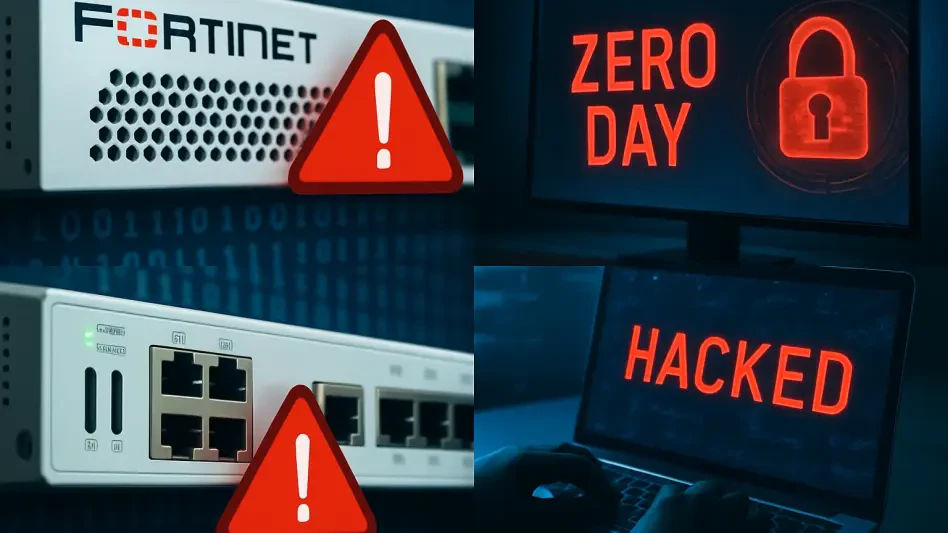Organizations today face an ever-increasing number of security threats, making effective vulnerability management crucial both for safeguarding data and ensuring operational integrity. By leveraging vulnerability management metrics, security leaders can transform raw scan data into actionable insights that guide strategic decisions, align team priorities, and monitor long-term trends. These metrics play a vital role in enhancing an organization’s overall security posture.
Understanding Vulnerability Management Metrics
Vulnerability management metrics are quantitative measures designed to evaluate how efficiently an organization detects, prioritizes, and mitigates security vulnerabilities. These metrics take raw scan data and convert it into insightful information such as average fix times and exploit likelihood. Security leaders can then use this data to align patching activities with broader organizational goals, ensuring that efforts to address vulnerabilities are both strategic and effective.
Effective vulnerability management metrics delve deeper into factors such as business impact and threat intelligence. This approach provides a consistent reference point for measuring progress and identifying gaps in security practices. Real-world factors are crucial for creating a comprehensive view of risk management, enabling organizations to prioritize and address vulnerabilities in a manner that is in line with their specific operational needs and threat landscapes.
Importance of Using Metrics
Implementing metrics within vulnerability management offers quantifiable evidence for assessing the effectiveness of security initiatives. Metrics enable organizational leadership to make informed decisions regarding staffing, solutions, and processes, ensuring that security investments are both strategic and economically effective. By providing clear, numerical indicators, metrics remove the guesswork from decision-making and establish a framework for measurable success.
Metrics also unify diverse teams by establishing shared goals and creating accountability, leading to smoother patch rollouts and fewer unaddressed critical flaws. This alignment is paramount in achieving effective remediation and ensures that every team member understands their role in maintaining a secure environment. Metrics further illustrate the return on investment for new tools and scaling operations, demonstrating improvements in key areas such as exploit windows, outstanding vulnerabilities, breach frequency, and incident response times.
Historical perspectives offered by metrics reveal root causes of vulnerabilities and set the stage for iterative improvements. By monitoring long-term trends, organizations can pinpoint recurring issues and refine their strategies to address them more effectively. Detailed measurements also ensure compliance with mandated patch timelines, aiding in smoother audits and better regulatory alignment which are essential for maintaining operational integrity.
Key Vulnerability Management Metrics
Mean Time to Detect (MTTD)
One pivotal metric in vulnerability management is Mean Time to Detect (MTTD), which measures the speed at which newly discovered vulnerabilities are recognized within the system. Shorter detection times significantly enhance real-time response capabilities, reducing the exploitable window that attackers might leverage. By bridging the gap between scanning results and real-time detection, MTTD provides a clear picture of how quickly vulnerabilities are flagged for remediation.
Mean Time to Remediate (MTTR)
Mean Time to Remediate (MTTR) captures the duration between detecting a vulnerability and successfully deploying a patch. Efficient remediation pipelines are crucial for minimizing delays and identifying bottlenecks in the fix cycle. Accelerated MTTR is key to reducing the window of opportunity for successful exploits by swiftly addressing detected vulnerabilities. This metric helps spotlight areas where improvements can be made in the pathology pipeline for quicker responses.
Vulnerability Detection Rate
Vulnerability Detection Rate is another critical metric, reflecting the thoroughness and quality of network and asset coverage in identifying potential security flaws. High detection rates suggest that the organization’s scanning processes are both comprehensive and effective, covering a wide array of assets and pinpointing vulnerabilities accurately. This metric is fundamental for understanding the overall health and robustness of the security ecosystem in place.
Prioritization and Risk Assessment
Exploitability Score
An essential aspect of vulnerability prioritization is the Exploitability Score, which measures the likelihood that a vulnerability will be exploited based on attacker interest and the availability of exploit kits. This score enables precise risk-based prioritization, combining the severity of the vulnerability with the potential for exploitation. It ensures that high-risk vulnerabilities receive the attention they merit and are addressed proactively.
Risk-Based Prioritization Metrics
Risk-based prioritization metrics rank vulnerabilities according to business impact, usage by exploit tools, and potential data exposure. These metrics help prioritize vulnerabilities accurately, ensuring that the most dangerous and potentially damaging flaws are addressed first. By focusing on business impact and exploit potential, security teams can mitigate the risks that would most affect the organization’s operational integrity and sensitive data.
Asset Exposure and Risk Scores
Asset Exposure and Risk Scores provide detailed analysis of security by offering scores per asset or subnet, highlighting which areas are less secure and need focused resources. Monitoring these risk scores across different business units allows organizations to pinpoint segments requiring additional attention and resources. This metric helps ensure that efforts to secure the organization are well-directed and cover all critical assets effectively.
Tracking and Measuring Ongoing Efficiency
Number of Open Vulnerabilities
Tracking the number of open vulnerabilities over time reveals whether the backlog of unresolved flaws is increasing or decreasing. This metric offers insight into the efficiency of vulnerability management practices and indicates areas needing improvement. Consistent monitoring ensures that organizations stay informed about their vulnerability landscape and make necessary adjustments to address backlog trends.
Percentage of Critical Vulnerabilities Addressed
A vital metric in demonstrating the maturity of a vulnerability management program is the Percentage of Critical Vulnerabilities Addressed. This metric focuses on the most severe flaws and their patching timelines, showcasing an organization’s responsiveness to critical issues. By ensuring that the most crucial vulnerabilities are promptly addressed, organizations can prove the effectiveness and dedication of their security efforts.
Mean Time Between Vulnerability Recurrence
Measuring the Mean Time Between Vulnerability Recurrence highlights how frequently the same or similar flaws reoccur, pointing to the efficiency of permanent fix implementations and DevOps pipeline management. This metric is instrumental in understanding the long-term effectiveness of security measures and the ability to prevent recurring issues through solid, lasting remedies.
Time to Mitigate and Time to Patch
Time to Mitigate and Time to Patch metrics compare immediate risk-limiting measures against the full patch deployment timelines. These metrics emphasize the efficacy of short-term preventive actions undertaken before stable patches are applied. Effective mitigation and timely patches are crucial for minimizing immediate risks and maintaining the security posture until full remediation is possible.
Scan Coverage Rate
The Scan Coverage Rate indicates the percentage of known assets scanned per cycle, ensuring comprehensive asset inventories and scanning schedules are maintained. High scan coverage rates are imperative for identifying minimal undetected vulnerabilities and ensuring that all assets are routinely scrutinized for potential security threats. This metric underscores the importance of diligent and systematic scanning practices.
Vulnerability Aging Metrics
Vulnerability Aging Metrics measure how long vulnerabilities stay unaddressed, often categorized by severity tiers. These metrics reveal process bottlenecks and guide timely remediation efforts, ensuring that vulnerabilities do not remain open longer than necessary. Addressing aging vulnerabilities promptly is vital for maintaining a robust security posture and minimizing exposure.
False Positive vs False Negative Rates
Tracking False Positive vs False Negative Rates offers insights into the accuracy of the scanning processes. Efficient identification of genuine vulnerabilities without being overwhelmed by false positives allows for effective resource allocation and timely remediation. This metric builds confidence in the scanning results and underscores the reliability of the vulnerability management program.
Vulnerability Remediation SLA Compliance
Vulnerability Remediation SLA Compliance measures adherence to Service Level Agreements concerning the fixing of critical vulnerabilities. This metric builds trust, proving that severe flaws are promptly and effectively managed per agreed-upon timelines. SLA compliance is crucial for maintaining operational integrity and demonstrating commitment to robust security practices.
Patch Success Rate
The Patch Success Rate indicates the number of vulnerabilities correctly addressed by patches, reflecting the effectiveness of patch testing and resolution of related conflicts. High success rates illustrate efficient patch management practices and ensure that vulnerabilities are adequately mitigated through reliable patch deployment.
Automated vs. Manual Fix Ratio
Highlighting the maturity of vulnerability management through the Automated vs. Manual Fix Ratio reveals the extent to which automation tools are utilized. A higher ratio of automated fixes reduces manual overhead and accelerates resolution times, enabling swift responses to detected vulnerabilities. Automation plays a pivotal role in streamlining security processes and ensuring rapid and consistent remediation.
Incidents Linked to Unpatched Flaws
Tracking Incidents Linked to Unpatched Flaws provides insights into security breaches caused by known vulnerabilities that were not addressed. This metric guides better scanning and patch management practices and highlights areas requiring improvement. Addressing vulnerabilities promptly minimizes the chances of incidents linked to unpatched flaws and enhances the overall security posture.
Overall Risk Reduction Over Time
Overall Risk Reduction Over Time summarizes cumulative risk exposure trends across severity tiers and asset criticality. This metric proves the effectiveness of vulnerability management efforts in reducing security risks progressively. It offers a comprehensive view of the impact of measures taken to enhance security and showcases the continuous improvement achieved through diligent vulnerability management.
Overcoming Challenges
Organizations face several challenges in vulnerability management, including partial scanning due to system diversity, prioritizing identified flaws, understaffing, slow patch processes, and internal silos impeding real-time measurement. Adopting risk-based scoring, automated patch orchestration, and frequent scanning are solutions proposed to optimize metrics management. These strategies ensure timely and effective responses to detected vulnerabilities and maintain a robust security posture.
Integrating scanning data with compliance or DevOps processes ensures consistent reporting and facilitates preparedness for new threats. Documenting policies and procedures provides clear guidelines for managing vulnerabilities, enhancing the organization’s ability to respond to security challenges efficiently. As technology evolves, adapting processes and tools to address vulnerabilities promptly becomes increasingly vital.
Enhancing Through Platforms
SentinelOne Singularity™ Platform offers robust solutions to enhance vulnerability management. It provides real-time threat detection, automated response, and comprehensive protection across endpoints, cloud, and identity. Key features like ActiveEDR enable root-cause analysis, enhancing the efficiency of the detection processes. Ranger® Network Discovery ensures accurate asset inventories, crucial for identifying and addressing vulnerabilities.
Singularity Identity prevents credential misuse, offering an additional layer of security to protect sensitive data. Automated response workflows facilitate faster containment and remediation, minimizing the impact of detected threats. SentinelOne’s platform provides an operational foundation that enhances vulnerability management metrics, ensuring continuous monitoring and improvement of security practices.
Conclusion
In today’s landscape, organizations are constantly bombarded with evolving security threats. This makes effective vulnerability management not just important, but essential for securing data and maintaining operational integrity. Vulnerability management metrics are key to this process. By using these metrics, security leaders can turn raw scan data into meaningful insights. These insights serve multiple crucial purposes: they help guide strategic decisions, align team priorities, and monitor trends over time.
The value of these metrics extends far beyond immediate threat response. They enable organizations to take a proactive stance on security, anticipating and mitigating risks before they can cause harm. By examining these metrics, companies can identify patterns and vulnerabilities that need urgent attention, ensuring that their defense mechanisms are always one step ahead of potential threats.
Moreover, these metrics facilitate better communication and understanding among different teams within an organization. When everyone has access to the same data and insights, it aligns their efforts and fosters a unified approach to security. This collective focus not only enhances the organization’s overall security posture but also builds a culture of continuous improvement and vigilance. In sum, leveraging vulnerability management metrics is a vital strategy for any organization determined to protect its assets and stay resilient in the face of ever-evolving security challenges.








